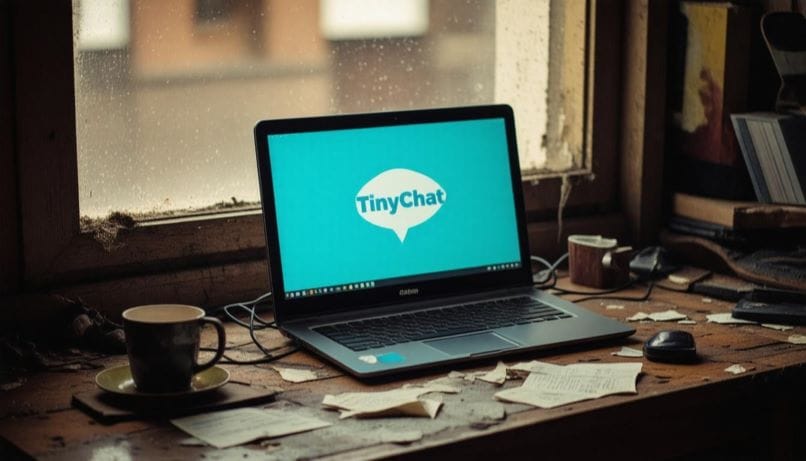TinyChat Has Closed: Important News for Users and Alternatives
In a world where video chats have become as familiar as texting, the recent closure of Tiny Chat raises some eyebrows and questions about what went wrong. After all, it wasn’t too long ago that TinyChat was buzzing with laughter and lively conversations, especially during those tough days of the pandemic when we needed connection the most. With its unique features and community vibe, it stood out among the plethora of chat options. However, as new platforms emerged, many users began to drift away. This shift left TinyChat struggling to keep up, leading to the announcement that sent shockwaves across its once-thriving community. So, how did we get here, and what does this mean for those who cherished their time on TinyChat? Let’s explore!
TinyChat officially announced its shutdown on December 16, 2024, after nearly a decade of providing video and chat services. The closure follows a series of challenges faced by its parent company, Paltalk, which acquired TinyChat in 2014 but struggled with operational controversies and competition in the market.
Tiny Chat was a pretty cool website back in the day, but it is not very mobile-friendly and suffered from a host of technical and also moderation issues, not being able to control the content is a major issue going forward, with the new online safety act coming into action in the UK sites like Tiny Chat would be in their sights for closure anyhow, so maybe their pulled the trigger before this happens, another one following the Omegal closure or giants in chat.
I think what l lot of people maybe don’t understand is video chat steaming can be extremely expensive, this is the main reason it closed.

The End of an Era: TinyChat Closure Announcement
On December 16, 2024, we learned that TinyChat would cease operations after nearly a decade of bringing people together via video chat. Many of us felt a jolt upon hearing this announcement; for countless users, it had become a lifeline during the isolating months of the pandemic, a space where friends could gather virtually even when physical distance barred them from doing so. The platform was more than just a website—it was a place of connection, laughter, and shared experiences.
Yet, as captivating as these memories may be, the underlying truth is that the winds of change were blowing. The announcement attributed this significant step to rising operational costs and waning user engagement—an explanation that leaves much to consider.
The Decline in User Engagement
As we examine TinyChat’s trajectory over recent years, it becomes clear that user engagement took a sharp downturn from its previous highs. At one point, we can recall proudly boasting about 400,000 daily active users. However, by late 2024, that figure plummeted dramatically to below 100,000—a stark reminder that even familiar comforts can fade away.
This decline can be traced back to several crucial factors:
- An increased surge of competition emerged from platforms like Discord and Zoom, which offered not only video chat but comprehensive features tailored for communities and businesses alike.
- We faced technical challenges, such as annoying server outages and frustrating lags that made online gatherings less enjoyable and often forced us to seek alternatives.
- Additionally, privacy concerns became prevalent, particularly following revelations from the NSA’s PRISM surveillance program, causing many users to rethink their online presence.
Understanding these shifts helps us grasp why the closure has such far-reaching implications in our virtual lives. As we navigate these changes in the landscape of online communication tools, it’s important to embrace new opportunities while remembering what made TinyChat special—a cozy corner for chats and connections amidst chaos. This transition opens up the discussion about the factors leading to such significant changes within the platform’s environment.
Reasons Behind the Closure
TinyChat’s closure can be attributed to financial, technical, and competitive factors. Despite raising impressive funding amounts and attracting notable investors in its earlier years, the platform couldn’t find its footing in a rapidly evolving digital landscape. Understanding this trajectory provides critical lessons about sustainability in the tech world.
Financial Strain
Initially, TinyChat raised $1.5 million back in 2011—a feat that highlighted its potential. However, financial issues soon emerged. While their freemium model offered appealing features for free, it proved insufficient in generating sustainable revenue streams. This challenge added to their struggles, particularly as subscription revenue saw a staggering 23.9% decline in the last quarter before closure. The platform faced an increased net loss that ballooned to $1.5 million for Q3 2024.
Notable investors included A-Grade Investments, Ashton Kutcher, Guy Oseary, Sean Combs (also known as Diddy), Naval Ravikant, and Ronald Burkle.
The inability to pivot towards more effective monetization practices left TinyChat vulnerable. They struggled to adapt pricing strategies or offerings sufficiently enough to appeal to both old and new users alike. Even with high-profile investor support, management without viable revenue became increasingly daunting.
Technical Issues
Beyond financial issues, technical challenges further complicated their situation.
Frequent server downtime and performance lags served as major deterrents for users seeking seamless communication experiences. These technical shortcomings led to frustration and diminished user satisfaction. Imagine trying to join a chat room only to be met with stuttering video feeds and abrupt disconnections—it’s an experience we all want to avoid.
Moreover, TinyChat’s struggle to keep up with technological trends like HD video streaming showcased its inability to innovate at a pace that matched modern user expectations. As technology advanced rapidly around them, they fell behind competitors adopting superior capabilities. Many loyal users migrated toward more reliable platforms offering better functionality—this trend illustrated TinyChat’s diminishing relevance.
Reflecting on these intertwined factors reveals how both financial strain and technical hurdles culminated in the end of TinyChat’s operations, shaping not only its fate but also informing the broader landscape of online communication tools.
TinyChat’s Legacy and History
Launched in 2009, TinyChat quickly became a cornerstone for group video chats and diverse discussions, establishing itself as a virtual gathering space that resonated with millions. The platform blossomed, reaching a remarkable peak of over 20 million registered users by 2020, making it one of the major players in the online chat realm. Its unique, engaging features captivated users and breathed life into conversations across various topics — everything from casual banter to serious discussions about art and culture.
Pioneering Features
At the core of TinyChat’s success were its pioneering features. One standout was the ability to broadcast multiple video feeds simultaneously — up to twelve users could share their videos while countless others listened and interacted. This functionality transformed chats into vibrant discussions, allowing groups to engage dynamically while eliminating the previous limitations set by single-user broadcasts.
Additionally, TinyChat introduced embedded chat rooms designed specifically for website owners, enabling them to host TinyChat rooms directly on their sites. This not only expanded TinyChat’s reach but also enhanced user interaction across various platforms, leading to exciting collaborations between creators and viewers. High-profile artists, including Lady Gaga, leveraged this feature for fan interactions, culminating in memorable experiences that kept their followers connected.
As we explore its legacy further, it becomes evident that TinyChat helped shape the landscape of contemporary social interaction.
Its rise coincided with our increasing thirst for authentic connectivity in a digital age. We engaged with friends and family through video chats, shared laughs in group discussions, and even explored new interests through casual meet-ups in themed rooms. TinyChat was more than just a chat service; it evolved into a cultural phenomenon that bridged gaps where traditional communication faltered.
However, alongside its accolades came challenges. Competition ramped up with the emergence of platforms like Zoom and Discord, which offered integrated solutions for group interaction. Despite TinyChat’s efforts to adapt, the shift in user preferences ultimately precipitated its demise. Our collective memories of vibrant exchanges on this platform carry on, leaving behind a legacy that paved the way for future communication technologies.
With TinyChat’s closure now a reality, many are left searching for alternatives that can replicate the spirited engagement it offered. This situation invites us to examine how users are responding and what impacts may arise from this significant shift.
Community Reactions and Impact
The news of TinyChat’s shutdown reverberated through social media platforms and forums, igniting discussions laden with nostalgia, frustration, and hopes for the future. Users across the board felt the weight of this loss, reflecting on the myriad personal connections they had cultivated within that virtual space.
Mixed Reactions
For instance, Reddit user @ChatLover89 expressed the heartbreak many felt: “It’s heartbreaking! I’ve made lifelong friends on TinyChat. Where will we go now?” This sentiment encapsulates the feelings of countless users who relied on TinyChat not just for casual chat but as a lifeline to friendships formed during long nights or lonely moments. We can all relate; it’s not merely a chat room—these spaces often become our second homes, where laughter echoes through virtual halls.
In contrast, some viewed the platform’s closure as an opportunity for growth, longing for more reliable alternatives. Twitter user @EagerForMore tweeted, “Finally! Now we can move to better platforms.” This perspective speaks to the underlying frustrations users faced due to ongoing technical issues, particularly concerning webcam compatibility—issues that had plagued TinyChat since its inception. Many had yearned for a more seamless experience in their interactions.
While opinions diverged dramatically, one common thread united these reactions: the emotional impact on the community.
Alternatives to Tiny Chat
There is a site that is almost identical to Tiny chat with the same format called stumblechat.com so you can go there if you miss it already, I would not be surprised if there are more sites exactly the same that I don’t know about.
Also, Chatiw wrote an article trying to get you to use Chatiw instead, do not use that site its a disgrace
In other news the domain is for sale if you want to buy it and restart the site yourself!



